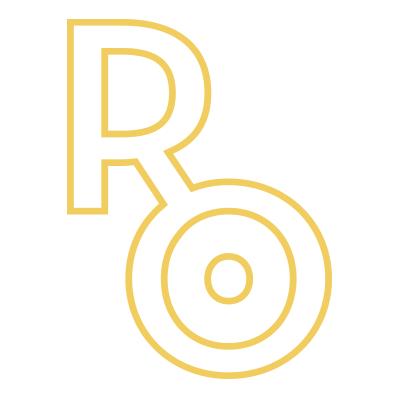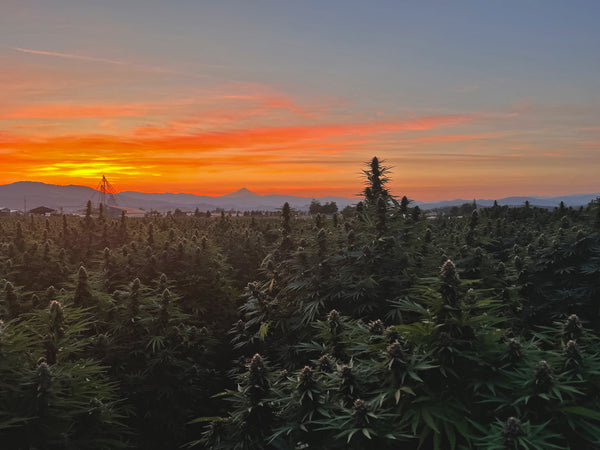
Best Practices for Farming Hemp Flower
Rogue Origin CBD Hemp Production
Hemp flower is a historically important crop in America because it’s a renewable and sustainable resource for a variety of industrial and consumer products, including bread, paper products, textiles, housewares, and much more. At Rogue Origin, we’re farming hemp flower to create a CBD-rich flower that you can smoke recreationally or medicinally.
Since we’re always working to improve our farming practices, we thought that we’d put together some of our current processes for farming hemp flower to ensure consistent, high-quality products that you can count on. Take a look at our breakdown to learn more about what we do out in the fields.
Site Selection
Choosing the perfect spot to plant hemp flower is an essential consideration since these plants prefer loose soil and full sun.
We set our eyes on the sunny Southern Oregon Valley because it’s the most premiere Cannabis climate in the country, hands-down. The farm has heavy black clay soil that holds a lot of water, nutrients, and biological activity while the property also has the ideal infrastructure for our entire process. With enough space to house a few large barns to dry flower as well as our offices and processing facilities, we’re able to process everything from farm-to-table.
Continuous Improvement

At Rogue Origin, we start every season’s crop from seed. When you plant seeds, you need to keep an eye on germination — the initial growth of the plant. High germination rates are always the goal so we watch each seed closely by starting them in the plant-tape trays in a controlled greenhouse environment. We have 840 plants per tray that will get planted using our plant-tape planter. While some cultivars may struggle with germ rates, others, like Lifter, did really well.
We started this spring by ripping the field, spreading compost, and bed shaping the rows in preparation for planting.
Working In Small Batches
We have learned that farming hemp flower in smaller batches helps us explore new varieties each year and learn as much as possible about germination rates, flavor, and cultivar results. As a hemp farmer in Oregon, you can’t plant and harvest year-round—you must work with the seasons to ensure the best crop. Even as lifelong farmers, we only have a handful of opportunities to grow, so we break each process into small batches as a way to improve the most we can.
To maximize our results, we focus on small-batch processing to work in smaller sections of the field and get our process dialed in. Learning how to improve our CBD hemp production process during each small batch helps us make the next batch better. Some of the techniques we’ve developed to ensure a better harvest include:
- Single piece flow
- Limiting work-in-progress
- Finished work
- Ensuring quality at each step
Soil selection is a critical part of managing plant fertility and CBD hemp production, so we take great care to understand the nutrients in our soil, adding supplements as necessary. The right balance of nutrients affects hemp flower crops' overall productivity (more on that later).
Using The Right Implements


We like to be very hands-on when farming hemp flower, but tools (or toys, as we call them) do make the job a little bit easier. Some of the most common CBD hemp farming equipment you’ll find at Rogue Origin include:
- Ripper: Used for tearing up rocky or compacted soils.
- Spring Cultivator: Preps seed beds by aerating the soil and killing any weeds.
- Power Harrow: Another means of preparing and aerating the soil.
- Two-Row Power Harrow Bed Shaper: Rough the beds in, two rows at a time.
- Compost Spreader: Distributes a thin, even layer of our compost mix.
- Three-Row Reverse Tiller Bed Shaper: Buries the rocks and blends the compost and nutrients into the final seed bed.
- Plant Tape Planter: Automated planting system that makes sowing quicker and easier.
- Tractor: Tows other implements and can also spray nutrients, like kelp and amino acids.
- Three-Row Cultivator: Remove weeds while leaving hemp flower plants and allows us to not have to use plastic mulch that’s otherwise commonly used throughout the industry.
We mix and match CBD hemp farming equipment depending on the soil content and the needs of our plants for each season.
After Planting
The next step in farming hemp flower is the continuous monitoring and maintenance of the growing plants. We go over the fields multiple times to irrigate, spray them with nutrients, and remove weeds. Many times, we end up walking each row multiple times, removing weeds by hand using hand hoes! Approximately one month after plants are put in the soil, we begin pulling leaf samples to analyze soil deficiencies and course-correct.
We believe that touching every plant by hand helps us ensure the quality of the hemp flower and deliver a better final product. While we use machines at the beginning of the CBD hemp farming process, we still check every plant once it’s in the ground and ensure it’s making a strong start. Our farming team goes back multiple times throughout the process, from seed and planting to harvesting and pruning, walking the fields daily to check for any male plants that must be removed and to check on the health and progress of the hemp flower.
We Don’t Do It Alone!

If you’re interested in learning more about hemp flower farming at Rogue Origin, we’d love to share all our knowledge! You can find additional details on our blog and in our FAQ. Looking for even more information on CBD hemp production? You can always send us your questions using our online form, and we’ll get back to you as soon as possible!
Happy farming!













